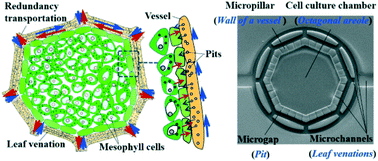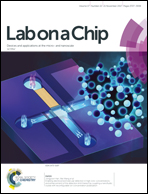A microfluidic design to provide a stable and uniform in vitro microenvironment for cell culture inspired by the redundancy characteristic of leaf areoles†
Abstract
The leaf venation is considered to be an optimal transportation system with the mesophyll cells being divided by minor veins into small regions named areoles. The transpiration of water in different regions of a leaf fluctuates over time making the transportation of water in veins fluctuate as well. However, because of the existence of multiple paths provided by the leaf venation network and the pits on the walls of the vessels, the pressure field and nutrient concentration in the areoles that the mesophyll cells live in are almost uniform. Therefore, inspired by such structures, a microfluidic design of a novel cell culture chamber has been proposed to obtain a stable and uniform microenvironment. The device consists of a novel microchannel system imitating the vessels in the leaf venation to transport the culture medium, a cell culture chamber imitating the areole and microgaps imitating the pits. The effects of the areole and pit on flow fields in the cell culture chamber have been discussed. The results indicate that the bio-inspired microfluidic device is a robust platform to provide an in vivo like fluidic microenvironment.



 Please wait while we load your content...
Please wait while we load your content...